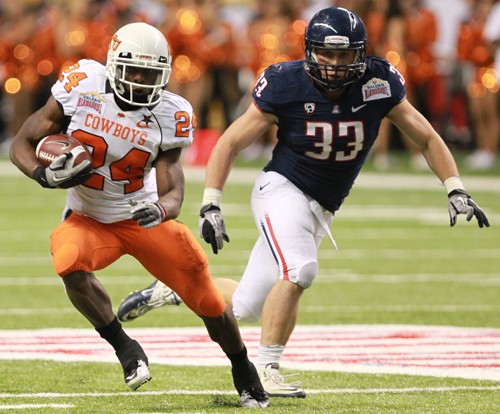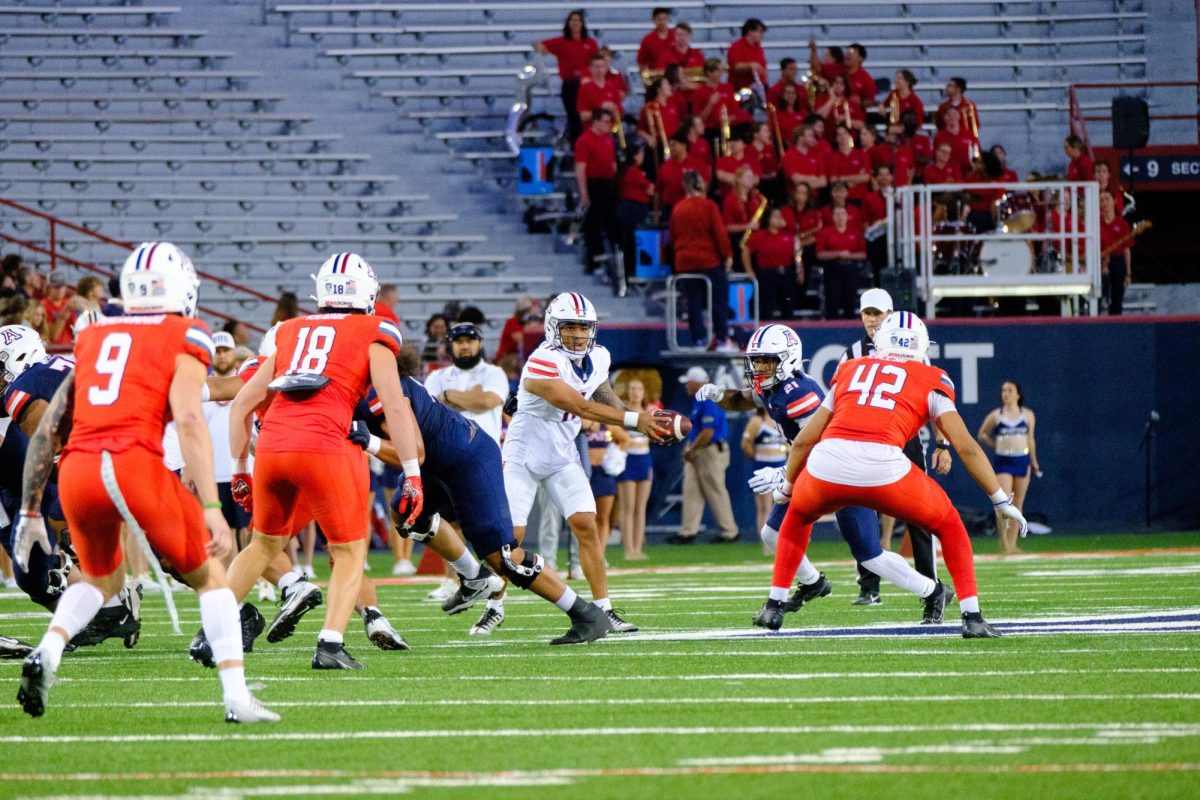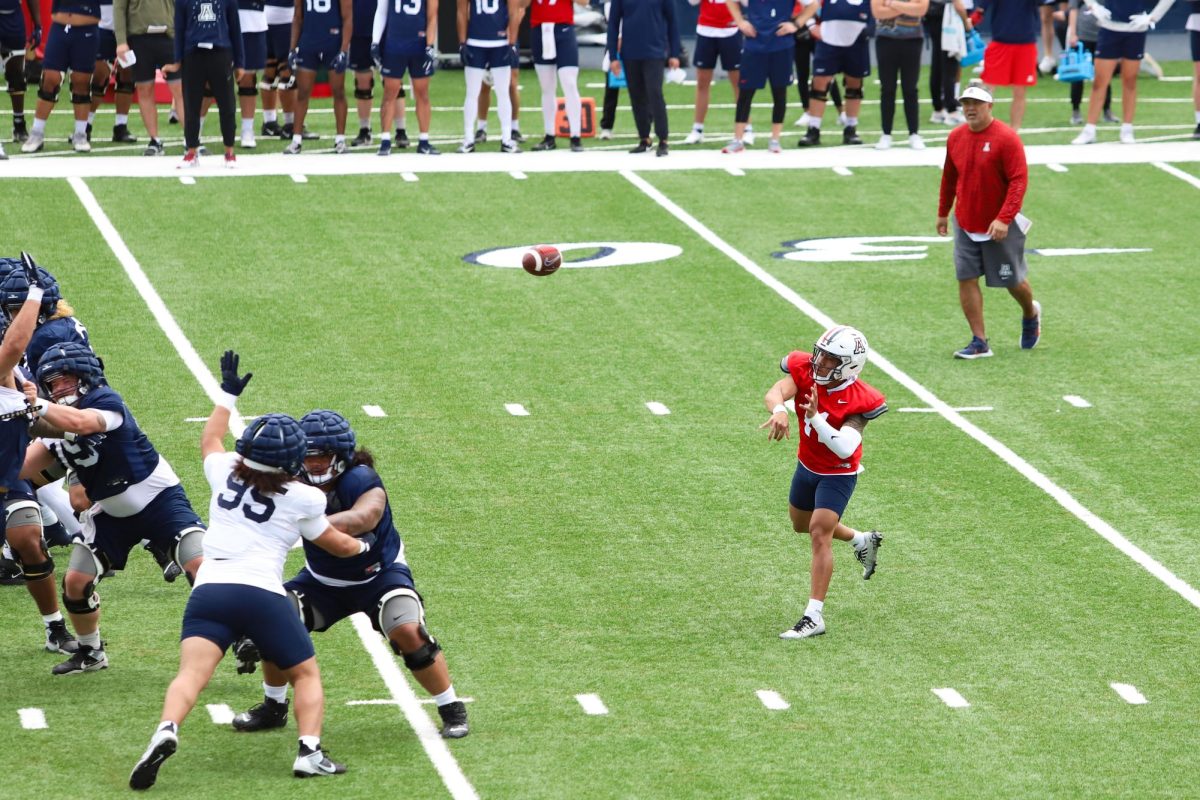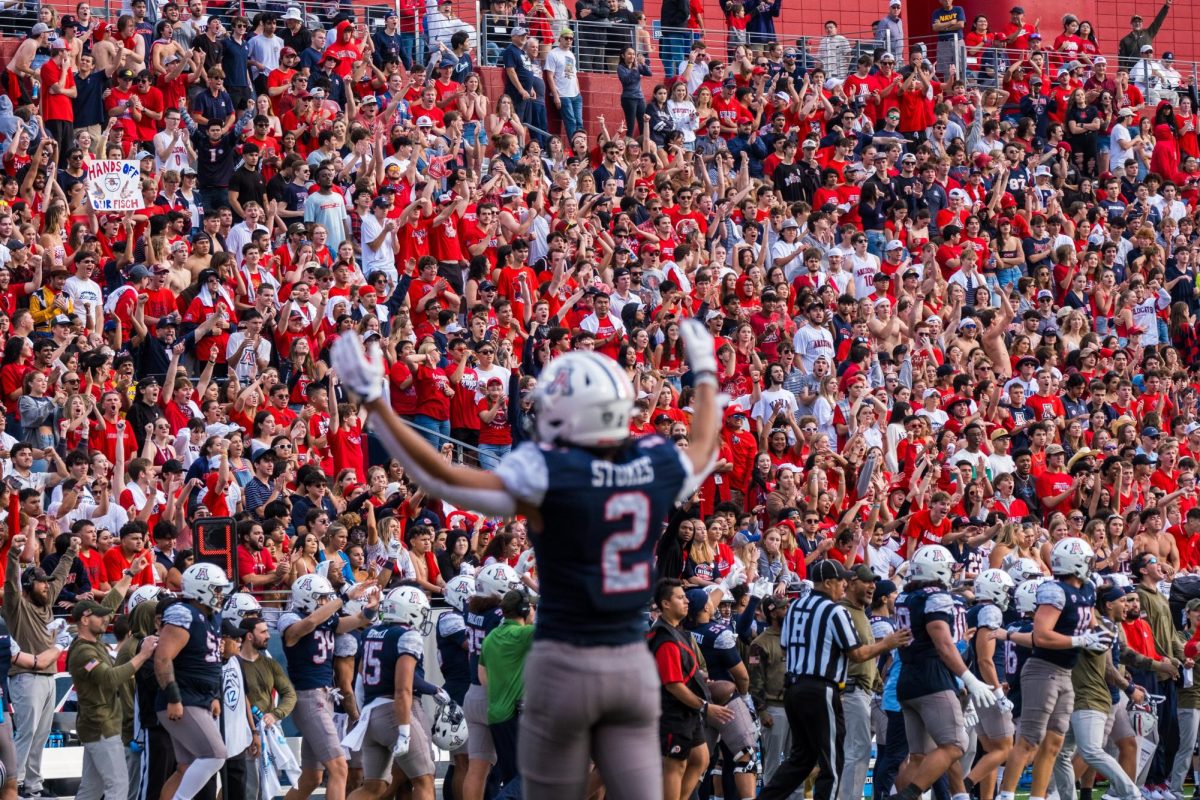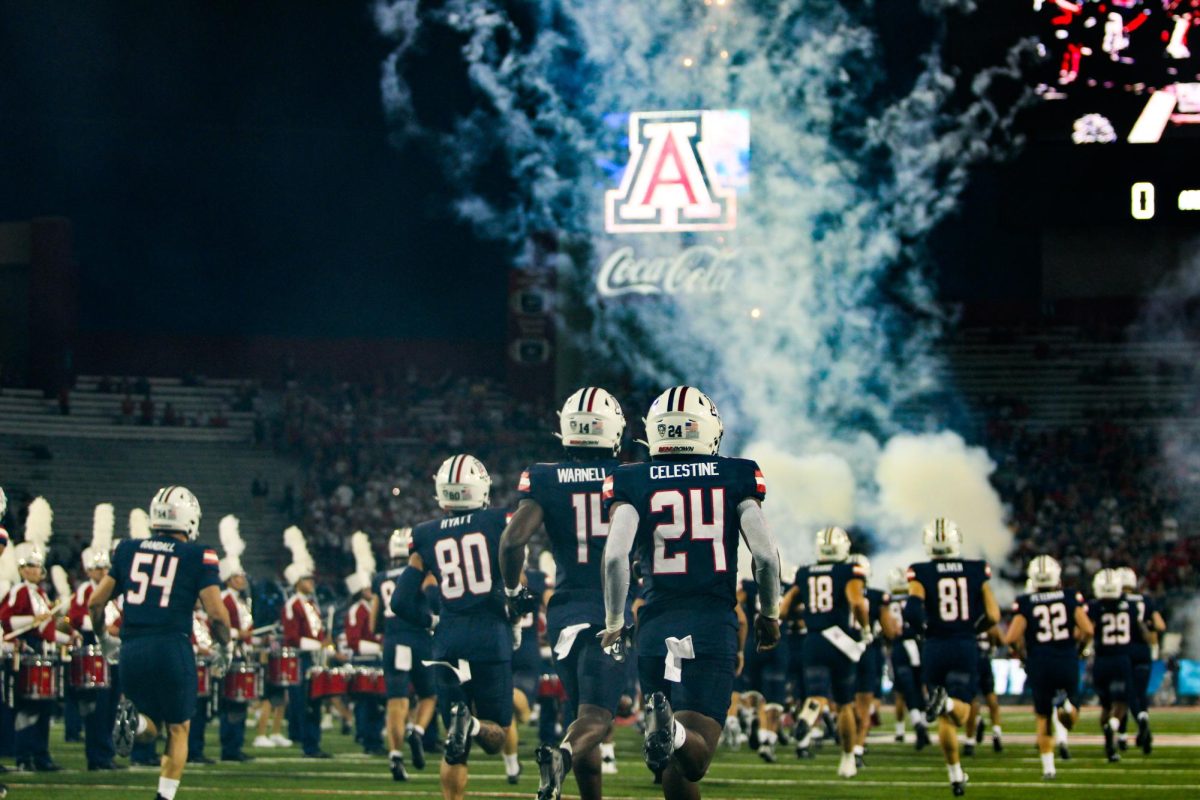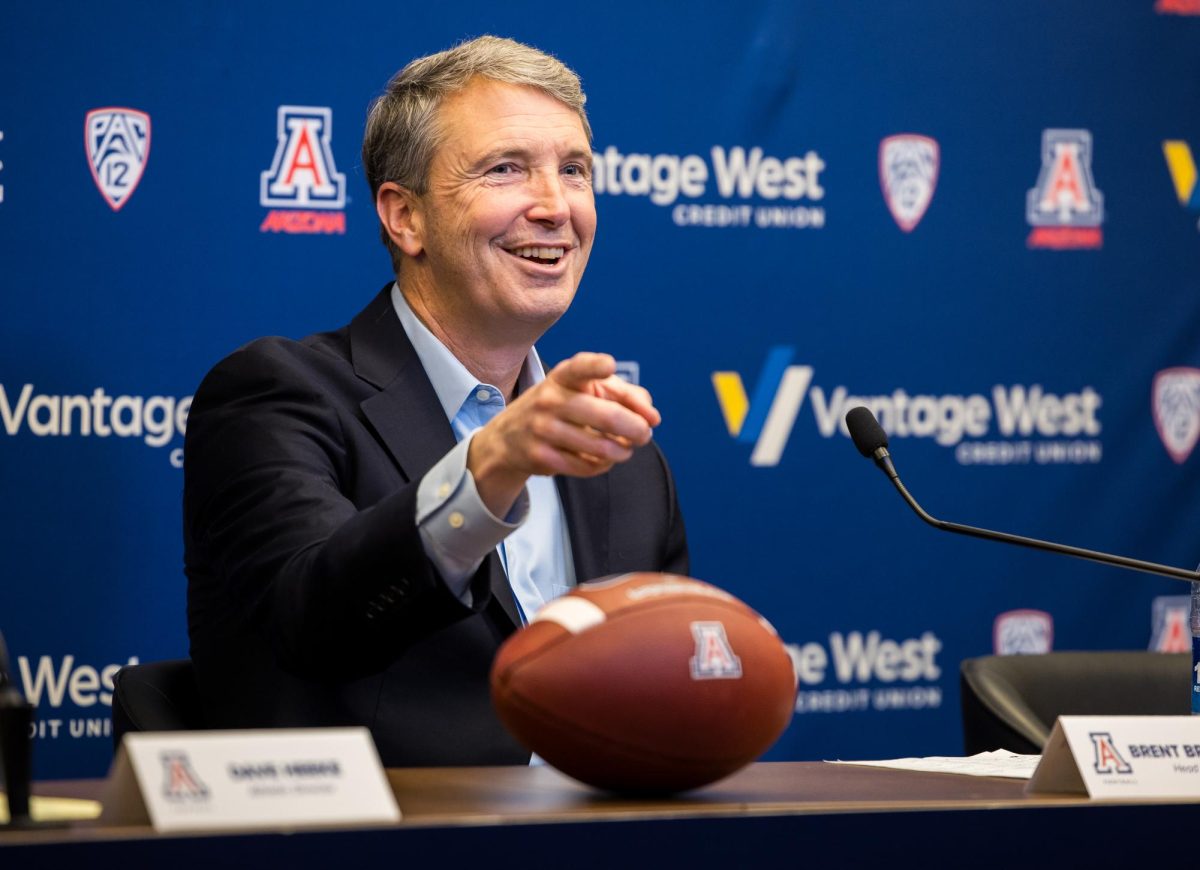While I was covering the Arizona football program for the last two seasons I often found myself wondering: Who are the Wildcats?
Are they good? Are they bad? Are they relevant? Are they really contenders? Are they really moving forward each week?
The answer to each question was and, for the time being, will always be that I don’t know. I don’t really think anyone does.
Try to think of team that has been more enigmatic over the last two seasons than the Arizona football team. I mean it, try.
You can’t, can you? I can’t either. For every last-minute touchdown pass to Bug Wright that beat Iowa there was a missed extra point. For every Juron Criner dive into the end zone to beat Southern California in 2009 there was an inexplicable double-pass on a critical third down.
Arizona football has been to the highest of highs and lowest of lows, but I still don’t know how to classify it.
But what about this? Arizona football is cursed.
Let’s assume that Arizona football officially arrived on the college football scene after it beat BYU in the Las Vegas Bowl in 2008. Take a look at this list of lowlights from the next two seasons:
2009: an interception off of Delashaun Dean’s foot that allowed Washington to comeback and beat Arizona, the aforementioned double-pass by Nick Foles in a loss to California, Jeremiah Masoli scoring six (six!) touchdowns to lead Oregon over Arizona on the same day as College GameDay on national TV and getting embarrassed by Nebraska in the Holiday Bowl on national TV. And losing its offensive and defensive coordinators, too.
2010: Getting annihilated through the air in a loss to a James Rodgers-less Oregon State, getting embarrassed by Stanford on national TV, getting outscored 34-10 in the second half against Oregon on national TV, Alex Zendejas missing two extra points in a loss to a bad ASU team on national TV and getting embarrassed by Oklahoma State in the Alamo Bowl on national TV. Not to mention finishing the season on a five-game losing streak. And losing a co-offensive and a co-defensive coordinator.
That just isn’t fair. No player, coach or fan should have to endure that. And what have the Wildcats done since? Nothing of note, which in the spring is fine. Actually that isn’t true — they lost their starting strong safety (Adam Hall), sam linebacker (Jake Fischer) and second-leading rusher (Greg Nwoko) to torn ACL’s.
I know, deep breaths.
Losing Fischer was the final straw. Not only was he a productive player, he was exactly what the Arizona coaches wanted. Tough, hard worker, leader. An effort guy. Maybe not an All-American on the field, but an All-American person. The type of guy that works his tail off every minute he’s at work and then comes home to his family and his golden retriever.
Hang on, I think I’ve got it. The Arizona football program is a 7-month-old golden retriever puppy. Hear me out:
At first glance, it’s beautiful. A face-of-the-program quarterback, lots of talent around him, and a head coach that you could still say is an up-and-comer. And they have really nice uniforms.
But you can kind of tell that, despite it growing bigger by the day, it hasn’t grown into its body mentally yet. The Vegas Bowl win probably inflated expectations a bit. While the potential was there, the Wildcats were nowhere near contending for the Rose Bowl in 2009 or 2010 despite expectations. The constant appearances on national TV only enhanced Tucson’s excitement. There’s still a lot of growing to be done, both mentally (they need to learn how to close games) and physically (they still need to recruit better athletes).
They act tough when they bark at dogs that pass when they’re sitting on the front step, 50 feet from the electric fence on the perimeter of your property, but cower when passing another dog on a walk. Arizona can beat up on Toledo or Washington State, but it’s just 2-5 against ranked teams and 0-2 in bowl games the last two years.
And even when the puppy tries to do good, it’s still immature enough to mess up — a renewed focus in the 2011 spring season resulted in those three key ACL tears. Sidenote: Golden’s are very susceptible to ACL tears as well. Bonus for the analogy.
But if we’re sticking with the analogy, keep this in mind: golden retrievers age quickly and they become one heck of a dog.
Maybe the Wildcats have that in common with them, too. And maybe now, finally, the growing pains are behind them.
— Tim Kosch is the sports editor of the Daily Wildcat. He can be reached at sports@wildcat.arizona.edu.



